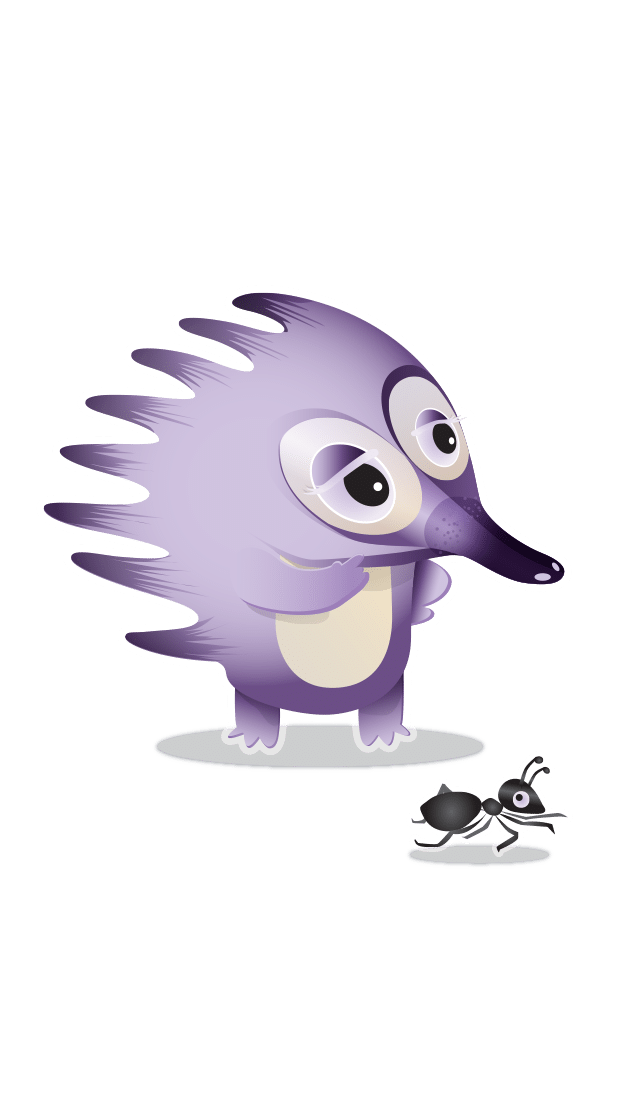

An organised and level-headed Echidna with spines of steel.
Edna is Eric’s twin sister. She shares some of Eric’s characteristics but is the more anchored and thoughtful of the pair – unless ants are involved.
Salads and ants are a delicious combination.
A bastion of common sense and sensible decision making – Edna is the yin to Eric’s yang. Edna is a better cook than Eric though she focuses more on hearty and healthy meals than cakes and sweets.

Edna Power Chart
Learn About Echidnas

Video courtesy of Taronga Zoo
THE ECHIDNA (TACHYGLOSSUS ACULEATUS)
Echidnas or spiny anteaters can grow to about 40cm long and weigh up to 7 kilograms. It has a bare, tube-like snout and a long, sticky tongue. The feet are dark and have a set of powerful black claws. The second claw on each hind foot is the elongated and is used to scratch and groom between its spines. It is covered by short, black hairs amongst the hard, sharp spines. These spines may reach 50mm long on the back but are shorter on the sides. Along with the platypus, echidnas are monotremes, strange mammals that lay eggs and then suckle their young.
Breeding: The Echidna’s breeding season occurs between July and August. After mating the male and female go their separate ways. Four weeks later the female lays a single egg into a simple pouch on her abdomen. Ten days later the baby Echidna hatches and starts to lap up milk from its mother. Baby Echidnas start life without hair or quills but will eventually grow these. When the young is too prickly to carry, the mother will dig a burrow for it. The young is weaned at about 7 months of age.
Behaviour: If threatened, echidnas will lodge themselves under a rock or log only leaving the sharp spines visible. It moves around making snuffling noises while it hunts for food.
See more at The Australian Reptile Park



